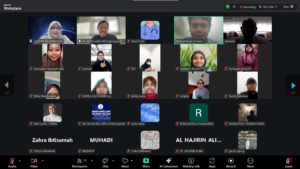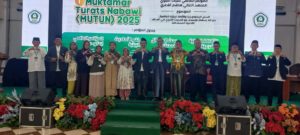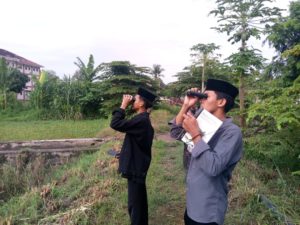We trained conservation clerics across Indonesia since 2006 (lead by Dr Fachruddin Mangunjaya), at least totally 600. In Indonesia, the training conducted Aceh, South Aceh, Riau, Mandailing Natal, South Sumatra, Banten, Bogor, Sulawesi, Kalimantan (West, South and Central), Raja Ampat West Papua (see map ).
Since 2016, we focused in Riau, Sumatra:85 clerics trained, and in Rimbang Baling landscape = 60 clerics.
See: Cerita dari Pulau Salawati Bersama Dai (The Story from Salawati Island: Clerics)
At the end of the training session, we always asked for a commitment of actions for their action of conservation preaching to reach their communities.
Action in Riau
The commitment of imam training from 40 clerics and pesantren teacher in Riau, was planned in 2018 would be reached to 156 .910 for up to three years. However in real reach up to one year (2019) after training, the total number of people outreached by clerics was 20.819 people with the activities of Friday sermons, community meetings, as well as teaching in schools. To analyze the impact of training activities, monitoring was conducted in mid-Mei 2020, a set of the questionnaire consists of 10 questions of sermon activities, numbers of outreach, and impacts sent to 34 respondents in Rimbang Baling that reachable by WA group.
17 respondents respond to the answer, while others did not answer as they were unreachable by phone or WAG. Most of the clerics said that there were some changes in community understanding of protecting the environments as people began to understand that endangered animals are living things like humans who have children and families, there is compassion for hurting other creatures, and the perceived impact if nature is damaged.
Studies & Documents:
- McKay, J.E., Mangunjaya, F.M., Dinata, Y., Harrop, S.R., and Khalid, F. 2014. Practise what you preach: a faith-based approach to conservation in Indonesia.Oryx 48(1):23-29
- Mangunjaya,F.M., C. Elkin, G.Praharawati, I. S. L. Tobing & Y.R. Tjamin. (2018). Protecting Tigers with A Fatwa: Lesson Learn Faith Base Approach for Conservation. Asian Journal of Conservation Biology. July 2018. Vol. 7 No. 1, pp. 78-81 (Pdf)
- Tjamin, YR., F.M Mangunjaya, I.S.L Tobing & G. Praharawati. 2017. The Attitude, Norm and perception of communities towards Sumatran tiger conservation initiatives in Aceh. Journal Indonesian Natural History 5 (1-2): 10-15 (Pdf)
- Mangunjaya, Fachruddin M & Praharawati,G. (2019) Fatwas on Boosting for Environmental Conservation in Indonesia. Special Edition on Religion and Environmental Activism in Asia. Religions 2019, 10(10), 570; https://doi.org/10.3390/rel10100570 (registering DOI )
- Selni, M.P., Mangunjaya,F.M., Praharawati,G., Tjamin Y.R. 2021. Pengetahuan, Persepsi dan Sikap Masyarakat Terhadap Keinginan Untuk melakukan Konservasi Hewan Liar yang Terancam Punah. (Knowledge, Perception and Atitude to Intention for Wildlife Conservation) Edukatif : Jurnal Ilmu Pendidikan Vol 3 https://www.edukatif.org/index.php/edukatif/article/view/579 DOI: https://doi.org/10.31004/edukatif.v3i4.579 (SINTA 4)
- Related Link :
- Awareness Tools for Conservation
- Free Book: Pelestarian Satwa Langka untuk Keseimbangan Ekosistem
- Khutbah Jumat: Pelestarian Satwa Langka untuk Keseimbangan Ekosistem
VIDEO






